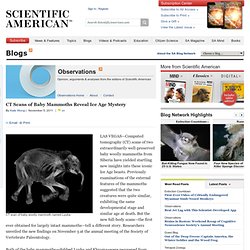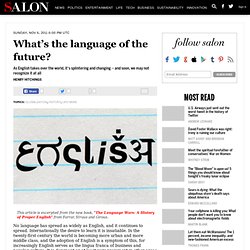

The evolution of deceit - Neuroscience. Not long ago, a young man drove onto Robert Trivers’ Jamaica property.

Suspicious of the man’s sudden appearance, and convinced he was intent on either extorting money from him or robbing him, Trivers, a Rutgers professor, confronted him about his identity. His first name, the man said, was Steve. “What’s your last name?” Trivers asked. Trivers, one of the world’s leading evolutionary theorists and an expert on deceit, was checking for a behavioral sign that the man was lying, like an absence of hand gestures or longer pauses between words, which indicate “higher cognitive load.” Trivers, a professor of anthropology and biological sciences, probably knows more about the mechanics and meaning of deception than almost anybody else in the world, and his new book, “The Folly of Fools,” covers pretty much anything you’d want to know about the topic. When you talk about deceit and self-deception what exactly are you talking about? Let me give you an example. Right. How old are you, Thomas? Galicians demand answers over 2002 Prestige oil spill.
27 August 2010Last updated at 00:45 By Sarah Rainsford BBC News, Galicia Galicians want reassurance that the Prestige disaster could never be repeated The coastline of Galicia is green and rugged, dotted with deserted, sandy coves.

But this enticing landscape was the site of one of Spain's worst environmental disasters. On 13 November 2002, the Prestige oil tanker ran into trouble just offshore. Continue reading the main story “Start Quote We'd never seen anything that big before... End QuoteFrancisco Iglesias A week later, it broke up, spilling more than 60,000 tonnes of heavy fuel oil. Now, a 266,000-page report into the accident is finally complete, paving the way for what has been dubbed a "mega-trial" later this year. Unlike the oil spill in the Gulf of Mexico, where BP is having to foot a huge bill for compensation, the complexities of international shipping meant Spain only recovered a small percentage of the estimated 660m euros ($832m; £541m) worth of damage caused by the Prestige. CT Scans of Baby Mammoths Reveal Ice Age Mystery.
CT scan of baby woolly mammoth named Lyuba LAS VEGAS—Computed tomography (CT) scans of two extraordinarily well-preserved baby woolly mammoths from Siberia have yielded startling new insights into these iconic Ice Age beasts.

Previously examinations of the external features of the mammoths suggested that the two creatures were quite similar, exhibiting the same developmental stage and similar age at death. But the new full-body scans—the first ever obtained for largely intact mammoths—tell a different story. Researchers unveiled the new findings on November 5 at the annual meeting of the Society of Vertebrate Paleontology. Both of the baby mammoths—dubbed Lyuba and Khroma–were recovered from Siberian permafrost, hence their remarkable state of preservation, which includes hair, skin and internal organs. CT scan of baby mammoths Lyuba and Khroma Although the two babies look alike on the outside, the CT scans showed dramatic differences in the shape of the skull and limb bones. What's the language of the future? - Globalization. No language has spread as widely as English, and it continues to spread.

Internationally the desire to learn it is insatiable. In the twenty-first century the world is becoming more urban and more middle class, and the adoption of English is a symptom of this, for increasingly English serves as the lingua franca of business and popular culture. It is dominant or at least very prominent in other areas such as shipping, diplomacy, computing, medicine and education. A recent study has suggested that among students in the United Arab Emirates “Arabic is associated with tradition, home, religion, culture, school, arts and social sciences,” whereas English “is symbolic of modernity, work, higher education, commerce, economics and science and technology.”
In Arabic-speaking countries, science subjects are often taught in English because excellent textbooks and other educational resources are readily available in English. Wherever English has been used, it has lasted.